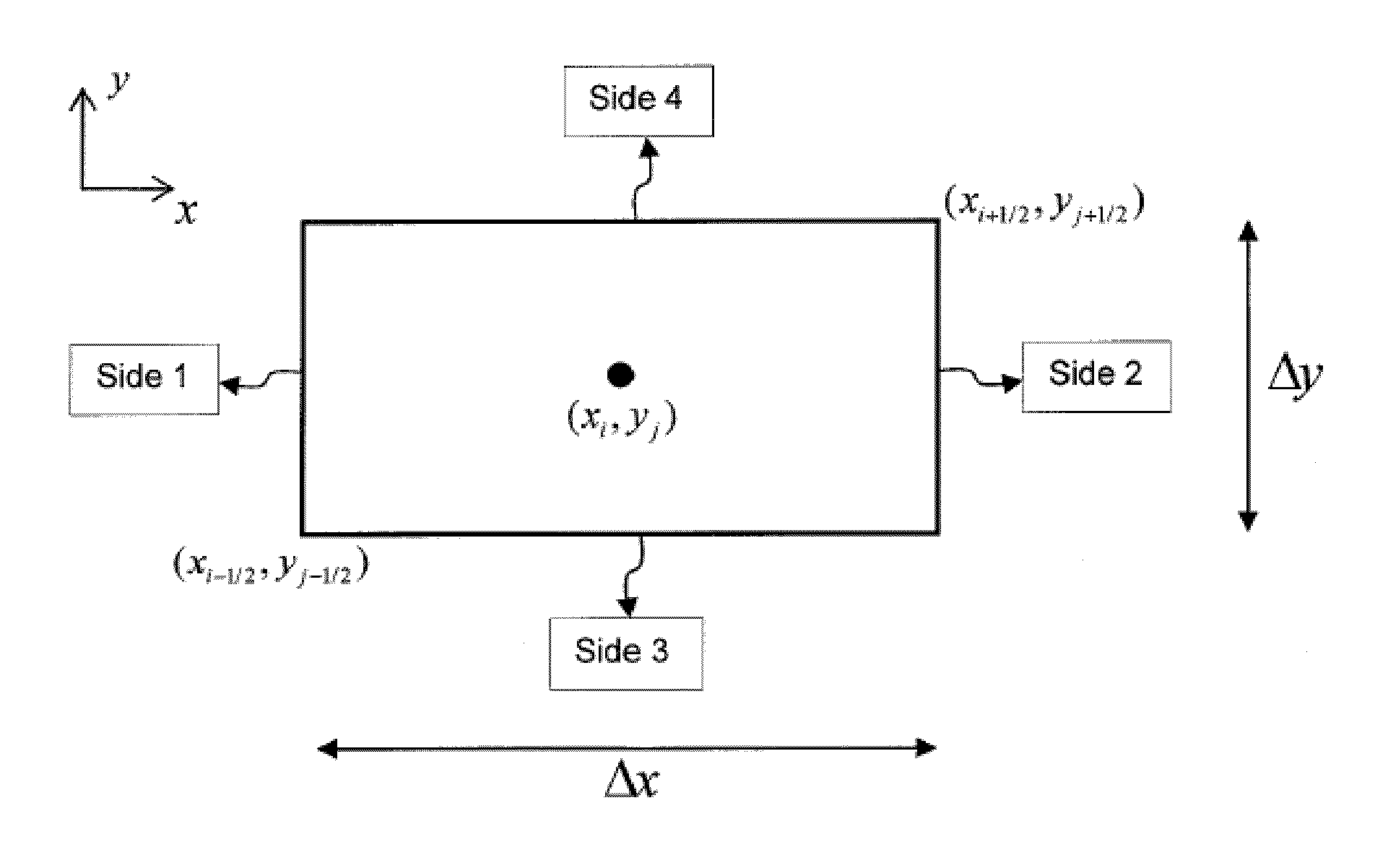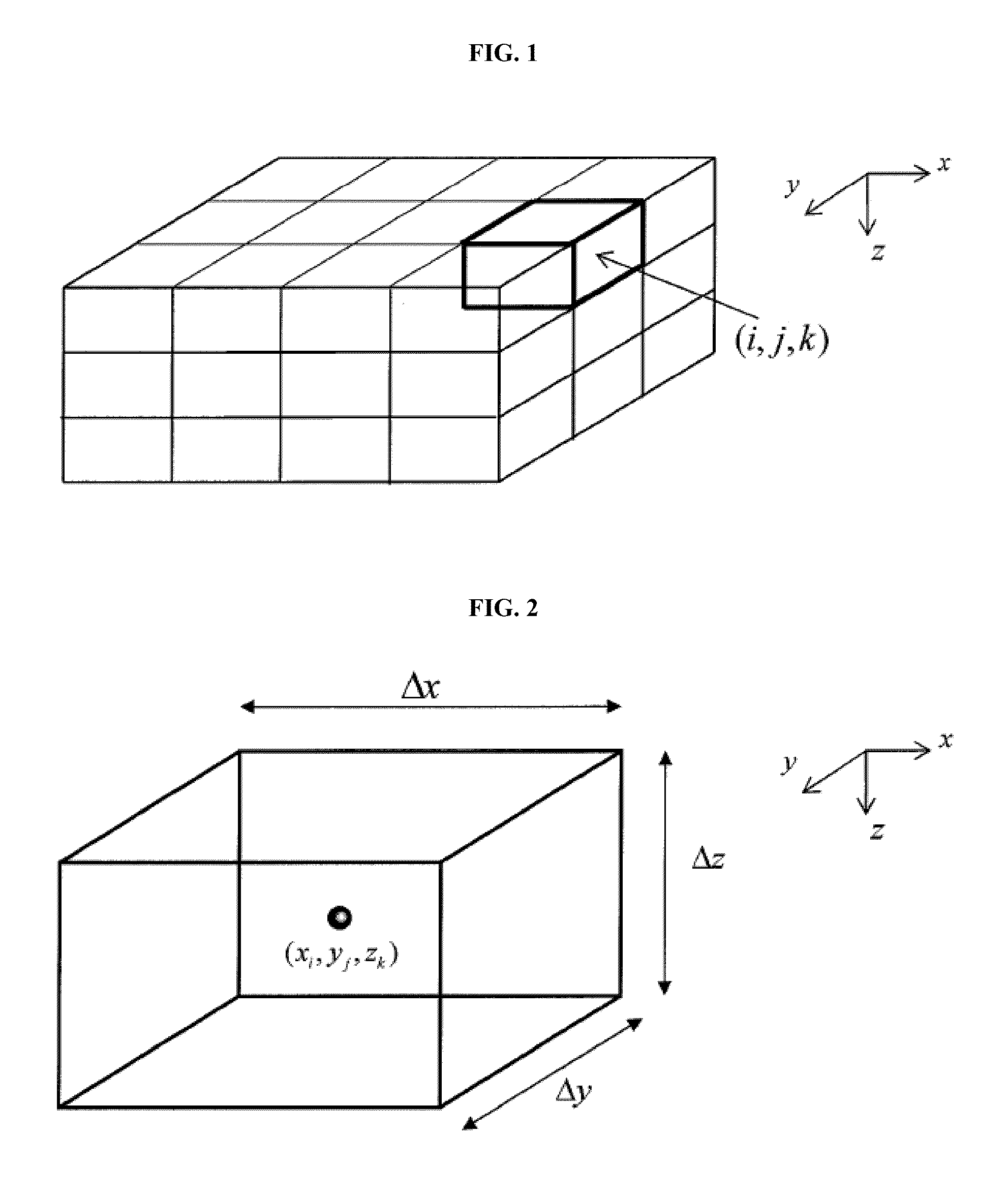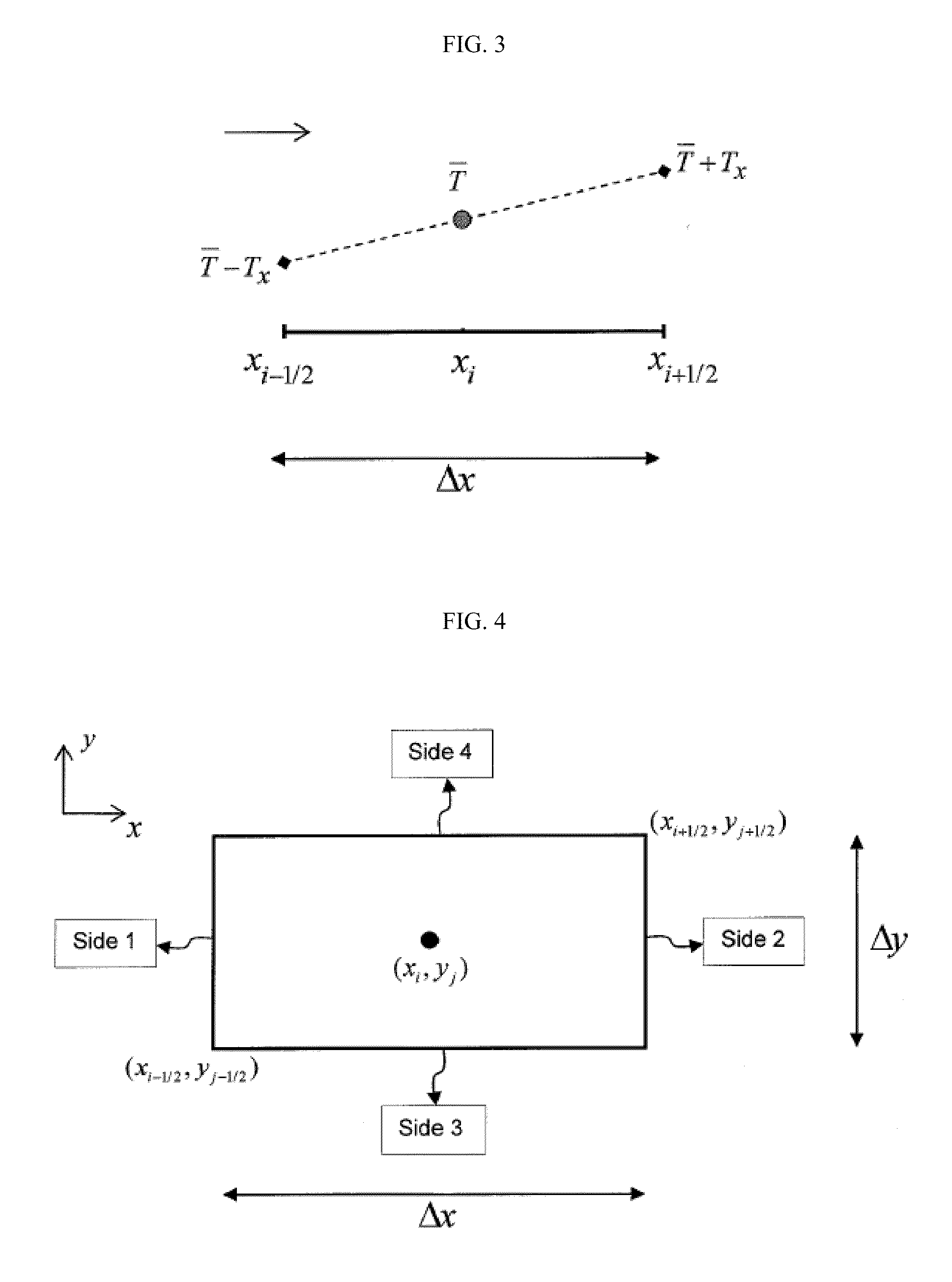Heat front capture in thermal recovery simulations of hydrocarbon reservoirs
a hydrocarbon reservoir and thermal recovery technology, applied in the direction of analogue processes, instruments, borehole/well accessories, etc., can solve the problems of monotonic dg method and local conservative energy, and achieve the effect of improving the stability of analysis
- Summary
- Abstract
- Description
- Claims
- Application Information
AI Technical Summary
Benefits of technology
Problems solved by technology
Method used
Image
Examples
Embodiment Construction
[0030]Turning now to the detailed description of the preferred arrangement or arrangements of the present invention, it should be understood that the inventive features and concepts may be manifested in other arrangements and that the scope of the invention is not limited to the embodiments described or illustrated. The scope of the invention is intended only to be limited by the scope of the claims that follow.
[0031]In simulating hot fluid injection in heavy oil reservoir, the accuracy of the temperature solution is crucial. The FD method that is used in most of the thermal simulators has an inherent limitation. The FD method may produce significant numerical dispersion that results in smearing sharp fronts of temperature and therefore degrades the accuracy of the solution. A common practice to restore the accuracy is to refine the grid by increasing the number of grid-blocks. Since the FD method is a first order approximation scheme, the improvement in accuracy as a response to re...
PUM
 Login to View More
Login to View More Abstract
Description
Claims
Application Information
 Login to View More
Login to View More - R&D
- Intellectual Property
- Life Sciences
- Materials
- Tech Scout
- Unparalleled Data Quality
- Higher Quality Content
- 60% Fewer Hallucinations
Browse by: Latest US Patents, China's latest patents, Technical Efficacy Thesaurus, Application Domain, Technology Topic, Popular Technical Reports.
© 2025 PatSnap. All rights reserved.Legal|Privacy policy|Modern Slavery Act Transparency Statement|Sitemap|About US| Contact US: help@patsnap.com



